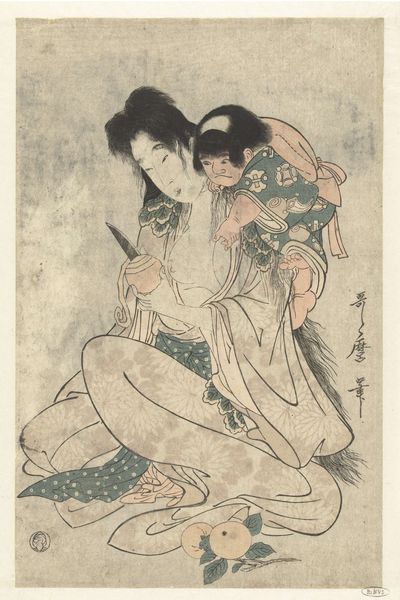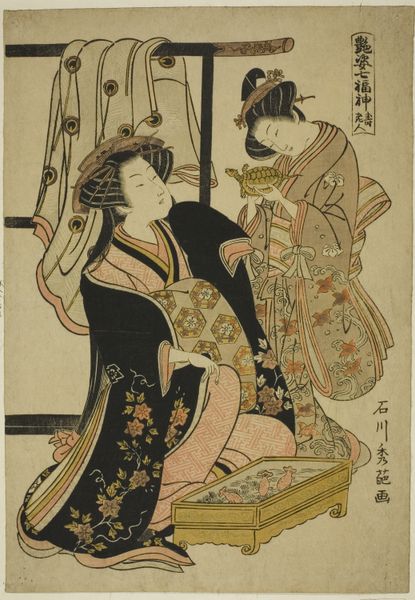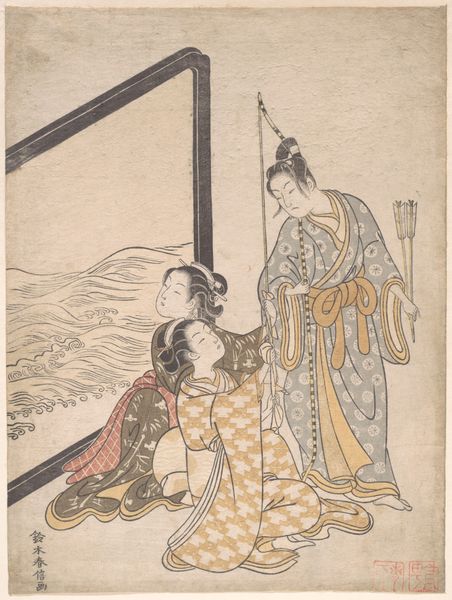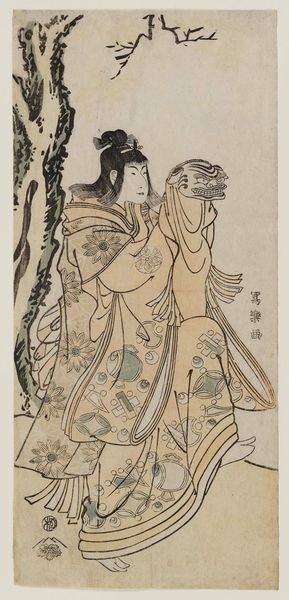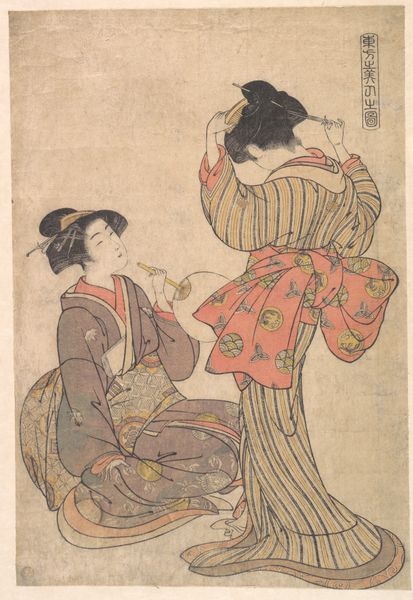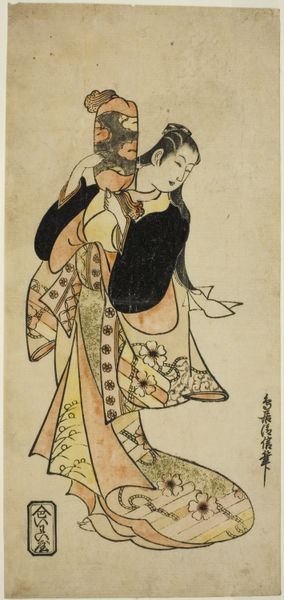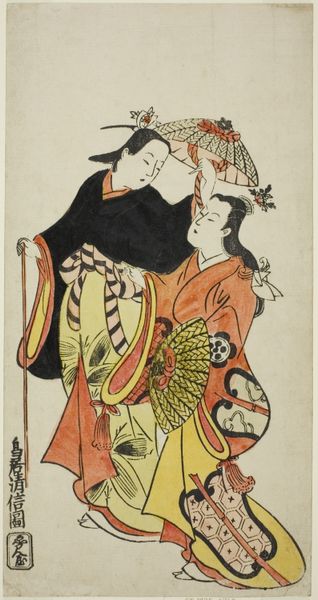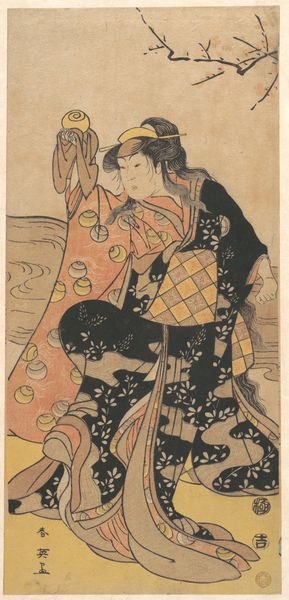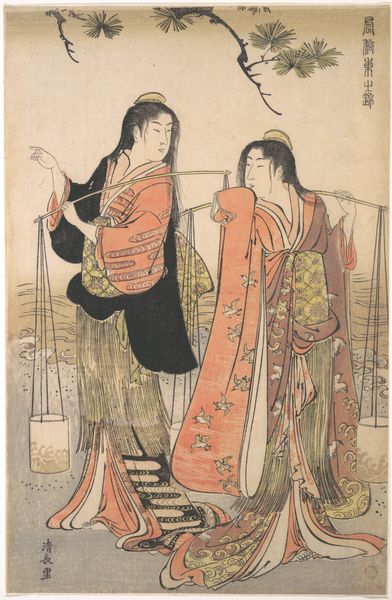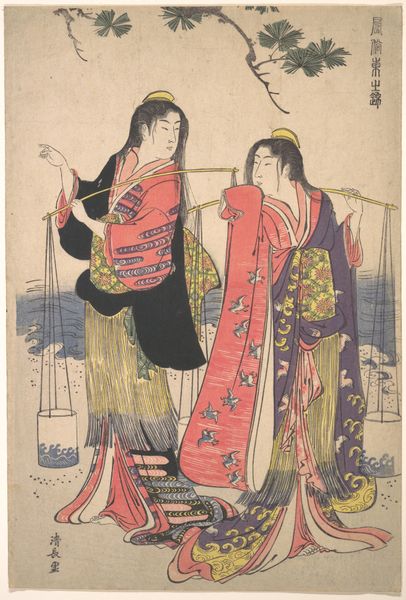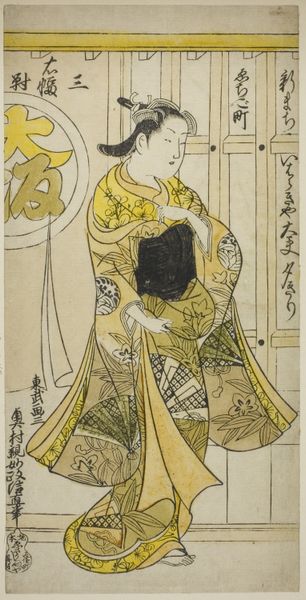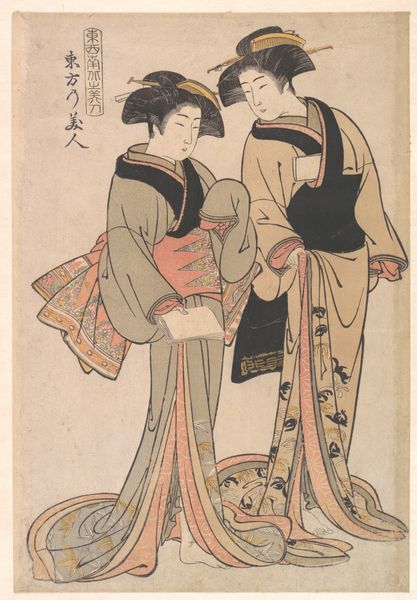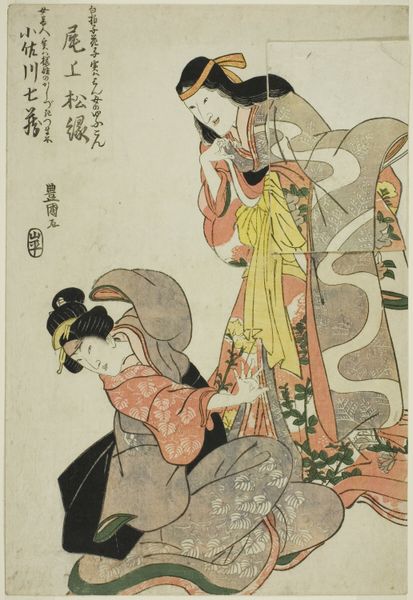
print, woodblock-print
#
portrait
#
ink painting
# print
#
asian-art
#
ukiyo-e
#
figuration
#
woodblock-print
#
costume
#
line
Copyright: Public domain
Curator: Well, that's… intense. The figures practically leap off the woodblock! The one in the back, all horned and glaring, what a presence. Editor: Indeed. We’re looking at "Momiji gari," a print created around 1794 by Tōshūsai Sharaku. It depicts a scene likely drawn from kabuki theatre. What draws my attention is the demon figure, likely a mischievous spirit. See the way they grasp the man’s head? Curator: Absolutely! The man’s all hunched over, almost defeated. It’s like a bad dream unfolding. The costumes, though! Even with what looks like torment, there's such detail in the fabrics—geometric patterns clashing with floral designs. A total riot! Editor: Yes, the garments offer a peek into the cultural significance of theatre at the time. Consider how such prints made theatre more accessible to audiences beyond the physical performance itself, spreading imagery and shaping popular understanding. This print functions almost like publicity. Curator: And Sharaku doesn't hold back, does he? The faces, all extreme emotion! The sharp lines seem to amplify every bit of anguish, humor, even fear. It’s visceral; you can feel the scene. But beyond that, it’s fun. This playful chaos with some pretty wild hairdos; what isn't there to like? Editor: The exaggeration you're noting is really core to Sharaku’s legacy. Although active for only a brief period, he created intensely expressive portraits of Kabuki actors and, here, characters—critics have sometimes seen that exaggerated theatricality as critique of the structures around celebrity, questioning representation itself through these bold prints. Curator: I think that’s possible, but more likely they were just playing to the crowd's imagination. Creating sensational images! Still, it definitely asks us to consider where drama exists, onstage, within, or in both places, no? Editor: Precisely! What strikes you the most now, looking back? Curator: It all lands like a swift, unexpected wink. It makes me ponder where fantasy blurs into my own day-to-day reality. Editor: A really vital point to take away. These works remind us how powerful visual narratives shape culture—even when adorned with horns and wild prints.
Comments
No comments
Be the first to comment and join the conversation on the ultimate creative platform.
